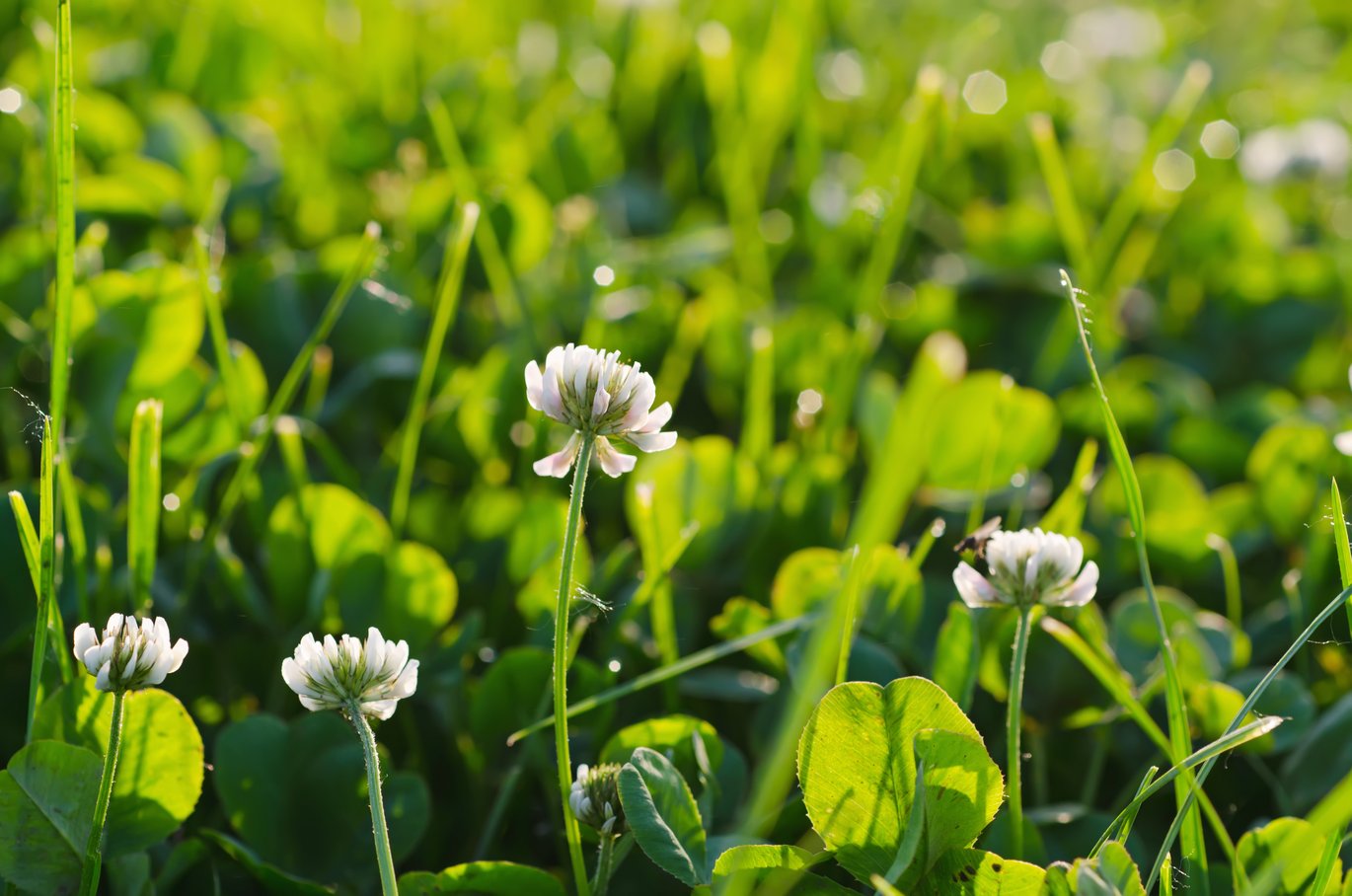Can we increase the carbon content of agricultural soils?
According to the Danish Parliament's "Agreement on the Green Transformation of Danish Agriculture", agriculture must contribute significantly to achieving the goal of reducing greenhouse gas emissions by 70% by 2030 compared to 1990 levels. An increase in the soil's carbon stock through changes in field management can reduce annual CO2 emissions, but calculating the carbon storage potential of different crops is a complicated matter. Researchers from Aarhus University have used long-term experiments to quantify the carbon storage potential of grass clover in rotation.

Climate change is considered one of the most pressing problems of our time. In this context, soil plays a greater role than might be expected. Soil can simultaneously store CO2 from the atmosphere and emit CO2 through microbial decomposition of organic matter.
"Soil contains three times as much carbon as plant vegetation and twice as much carbon as the atmosphere. Therefore, even small changes in soil carbon content can have a large effect on the global carbon cycle, which is why there is an increasing focus on carbon storage in soil to mitigate climate change," says postdoc Johannes Lund Jensen from the Department of Agroecology at Aarhus University.
But what will it take to increase the carbon content of agricultural soils? It all starts with photosynthesis, where plants use the energy of sunlight to convert CO2 and water into oxygen and organic matter in the form of glucose. So, it's very much about maximising the production of plant biomass. In an agricultural context, greater use of perennial crops such as grass is particularly emphasised. This is because they maintain photosynthesis for a longer period of time and thus deposit more carbon in the parts of the plant that are not harvested or removed, particularly in the root system.
Inventory of the carbon storage potential of farming systems
There are a number of different actions that could affect the soil's carbon storage potential in day-to-day farming. However, a reliable assessment of the carbon storage potential of different farming practices requires a lot of information. "First of all, one relies on long-term field trials where the management practices are studied. This is necessary because soil carbon content changes slowly - over a number of years," says Professor and Section Head Jørgen Eriksen also from the Department of Agroecology at Aarhus University.
The problem is that such long-term experiments are rare and valuable. Aarhus University has a trial that was set up in Foulum in 1987. The experiment consists of a six-field rotation with two years of clover grass, which was introduced on an area where cereals had previously been grown. In 2006, however, the experiment was split into two; one rotation continued with two years of clover grass, while another rotation now had clover grass for four years.
Measurements show that for the crop rotation with 1/3 clover grass throughout the period, soil carbon increased until a new equilibrium state was reached. The new equilibrium state was reached after 20 years, after which the soil carbon content did not change further. The average annual carbon storage by converting an area previously used for cereal cultivation to a crop rotation with 1/3 clover grass was determined to be 0.25 tonnes ha-1 year-1.
"The larger change in carbon storage in the first years is good news in a climate context, because measures with a significant and rapid effect are needed. The bad news is that there is an upper limit to everything. After 20 years, the input no longer has an effect, but the 1/3 clover grass rotation must still be maintained to maintain the reached carbon levels. For example, if you switch to cereal crops, the carbon content of the soil will quickly fall again," explains postdoc Johannes Lund Jensen.
Important to protect high-carbon soils
The results make clear that the full carbon storage potential of an operational approach is determined by both the time it takes to reach a new equilibrium and the total change in the carbon stock. It is worth noting, according to the researchers, that protecting soils with high carbon content is at least as important as increasing carbon content further, as it is generally faster to lose carbon than to build it up.
Additional information | |
| We strive to ensure that all our articles live up to the Danish universities' principles for good research communication(scroll down to find the English version on the web-site). Because of this the article will be supplemented with the following information: | |
| Collaborators | Department of Agroecology at Aarhus University |
| Funding | Ministry of Food, Agriculture and Fisheries Denmark, the Danish Agricultural Agency, klimaforskningsindsatsen i landbruget (33010-NIFA-19-708) |
| Conflict of interest | None |
| Read more | You can read the article "Soil Organic C and N Stock Changes in Grass-Clover Leys: Effect of Grassland Proportion and Organic Fertilizer". It is published in Geoderma, and is written by Johannes Lund Jensen, Amélie Marie Beucher and Jørgen Eriksen. Results from the project will be presented at Plantekongres 2023 in the session "Carbon storage by grass cultivation". |
| Contact | Postdoc Johannes L. Jensen, Department of Agroecology, Aarhus University, Blichers Allé 20, 8830 Tjele. Tel: 22193421. E-mail: jlj@agro.au.dk Professor Jørgen Eriksen, Department of Agroecology, Aarhus University. Tel: 51680554. E-mail: jorgen.eriksen@agro.au.dk
|
